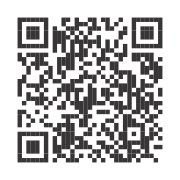

From farmers markets to Jack-O-Lanterns, pumpkins pop up just about everywhere this time of year. Along with squash and watermelon, pumpkin is a member of the gourd family. Surprisingly, pumpkin is actually considered a fruit – and a healthy one too!
Many chili recipes call for healthy ingredients like ground turkey, beans, and crushed tomatoes, but this recipe is a little different — and even healthier — because it also calls for a can of pumpkin purée. Canned pumpkin is convenient, and it’s even more nutritious than fresh because the pumpkin is cooked and concentrated. Half a cup has about 50 calories, 4 grams of fiber, and 300 percent of your daily requirement of vitamin A, a vitamin that boosts the immune system and keeps eyesight going strong.
2 teaspoons canola oil
1 small onion, cut into ¼-inch dice (1 cup)
1 pound lean ground turkey
One 28-ounce can crushed tomatoes, undrained
One 15-ounce can 100% pumpkin purée
One 15-ounce can pinto beans, drained and rinsed
1 cup frozen corn kernels, thawed or canned, drained and rinsed
2 teaspoons chili powder
2 teaspoons ground cumin
1 teaspoon ground cinnamon
Shredded, reduced-fat Cheddar cheese, light sour cream or plain yogurt, fresh cilantro
Nutrition Information per Serving (about 1 1/3 cups):
270 calories, 9g fat (2g saturated, 0.3g omega-3), 310mg sodium, 30g carbohydrate, 10g fiber, 22g protein, 180% vitamin A, 25% vitamin C, 10% calcium, 20% iron
Install this web app on your iPhone: tap ![]() and then Add to Home Screen.
and then Add to Home Screen.
Side-Lying Hold
This hold is useful when:
Cross-Cradle Hold
This hold is useful when:
Clutch or “Football” Hold
This hold is useful when:
Cradle Hold
This hold is useful when:
Laid-Back Hold
This hold is useful when: